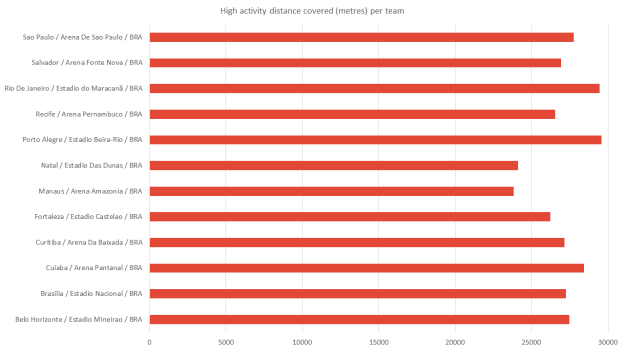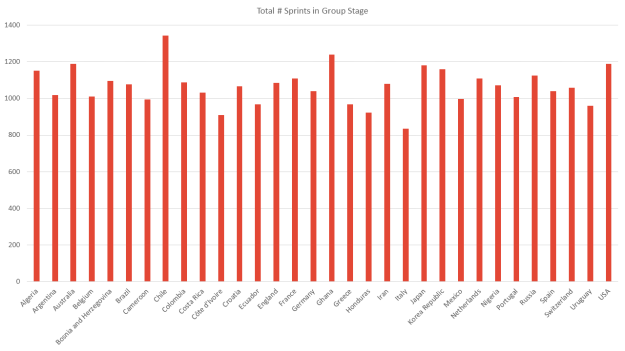So with my position reviews now complete, I have a few points to make about the processes I have tested and what can be learnt. What will be more interesting to some readers is the fact that I can now also publish an alternative ‘Dream Team’ for last season based on my bespoke analysis.
All of the data analysed in these position reviews considered players who had played a total of more than 1000mins from a place in the starting line-up – with the one exception made for central attacking midfielders (for whom the limit was 500mins). As a result, players who made a habit of substitute appearances or a positive (or negative) impact from the bench – Theo Walcott springs to mind here – may not be considered fairly. In addition, players who were injured or out of favour for a significant proportion of the season may have shown themselves to be truly important when they did play but again didn’t qualify for my lists – perhaps for example Carlos Tevez, Hatem Ben Arfa and Nemanja Vidic.
In addition, I tested different weighting methodologies for each position review. The weightings used are obviously essential to the the final tables by which players are ranked and it should be noted that very different lists can be easily calculated with a few tweaks to the model. This is not intended to be a definitive ‘who is best’ rating but rather a simple test of how players can be compared to one another with an eye on correlations to wins, draws and losses.
Lastly, one season does not make a great player and the game evolves from year to year. As a result, we can’t make any concrete conclusions from 1 season’s worth of data. The availability of this data has certainly encouraged me to seek out more where possible – of course, the bigger the sample size, the better the chances of making a definitive conclusion.
The key general qualities I found for each position are noted below:
Goalkeepers with a high proportion of saves to shots, good passing accuracy and low error frequency are the qualities that seemed most important for this position last season. No surprises there. Looking back at my review, and influenced by recent discussions by other bloggers regarding keeper behaviour, we can imagine that all of these ratios are quite dependent on the team in which the keeper plays. It can be argued that the best defences limit good shooting opportunities, so perhaps it is inevitable that Joe Hart and de Gea would perform strongly here. In addition, a keeper will surely have a low error frequency if he is put under pressure less often by opposing attackers. As for passing accuracy, it is up to the defenders/midfielders to make a reasonable attempt to find a position to receive the ball. At the weekend, Newcastle’s goalkeeper Steve Harper made an unwise attempt to dribble past Danny Welbeck (did he not see my striker analysis which showed Welbeck to have the highest recovery rate last season?!) – as a Newcastle fan, I could not believe that the ball was passed back to Harper and neither full back: Ferguson nor Santon, dropped back to offer a wide short pass opportunity. A revisit to this analysis would require some thought to how to reduce the bias to the team in which the keeper plays.
This type of argument also applies to other positions where my analyses could be scrutinised and improved by further research on the key areas which contribute to the fields I used.
Fullbacks seem to need to have a combination of strong ground duel ability and an aptitude to join the attack as much as possible. Going forward they are heavily involved in linking play in wide positions but also must have excellent reactions and positioning to defend one-on-ones against attacking wingers without picking up yellow cards too frequently. Strong aerial duel prowess is not necessary but would obviously be a bonus, as would goals and assists.
Centrebacks need to be strong in both ground and aerial duels, and the more assured they are on the ball the better as ‘unsuccessful ball touch’ is introduced to the analysis. Central defenders with a high clearance rate are useful for teams expected to be in the lower reaches of the league, whilst high passing accuracy is more important for the top teams. A decent goal scoring record (from corners/set pieces) is again a bonus.
Defensive midfielders are regularly under pressure from opposing attackers and midfielders. Good tackle success, interception rates and recovery rates are important. Being able to retain the ball is also important so one touch lay-offs and passing accuracy are useful in this position whilst heading ability or a propensity to find a teammate in an advanced position can be considered a bonus.
Central midfielders are most important going forward than in defence. As a result goals and chance creation were biased by my review, alongside good passing success in the middle third and ground duel success. Low dispossession rates are also important.
Wingers/wide attackers need to have some ability in retaining the ball in the opposition’s half. The more often the player in this position finds space to receive the ball the better the chance of creativity so a good touch per min rate is also useful. Dribbling is a bonus skill – whilst of greater importance is chance creation / goals. Defensive attributes such as ground duels and recoveries are notable but in general secondary to attacking qualities.
Central attacking midfielders are all about chance creation, ball retention and goalscoring with no serious defensive qualities neccessary in open play (positioning may be another matter). The central attacking midfielder is likely to see more opportunities to play through balls or shoot than other midfielders, hence a good shooting ratio and opposition half pass success are most important.
Like central attacking midfielders, strikers who have high shooting accuracy and goal conversion rates along with chance creation are most valuable. Heading, dribbling and recovery rates are next important to players in this position.
My dream team (and squad) for last season based on the position review series is below. The players included obviously performed best overall in the areas discussed above. I have modelled the team for 3 of the more popular starting formations to ensure coverage for every position I reviewed in my series:

This compares to the PFA team of the season listed below:
| Pos. |
Player |
Club |
| GK |
Joe Hart |
Manchester City |
| DF |
Kyle Walker |
Tottenham Hotspur |
| DF |
Vincent Kompany |
Manchester City |
| DF |
Fabricio Coloccini |
Newcastle United |
| DF |
Leighton Baines |
Everton |
| MF |
David Silva |
Manchester City |
| MF |
Yaya Touré |
Manchester City |
| MF |
Scott Parker |
Tottenham Hotspur |
| MF |
Gareth Bale |
Tottenham Hotspur |
| FW |
Robin van Persie |
Arsenal |
| FW |
Wayne Rooney |
Manchester United |
Compared to the PFA team Coloccini, Baines and Bale are not in my form team of the year although the rest are at least in my ‘squad’, if not in the starting line-up.
I can also show an alternate England team based on English players’ rating in these positions. Of course some of the players were either not included, injured or retired from international duty over the summer but it provides a different perspective on the England team that could have gone to Euro 2012.

The last comment I will make is the incredible performance of Manchester City players in all reviews because in every position City were represented by a player in the top 2 except central attacking midfield – in which Agüero (who came 2nd in the striker review in any case) still finished in the top 5.
Comments welcome.






















